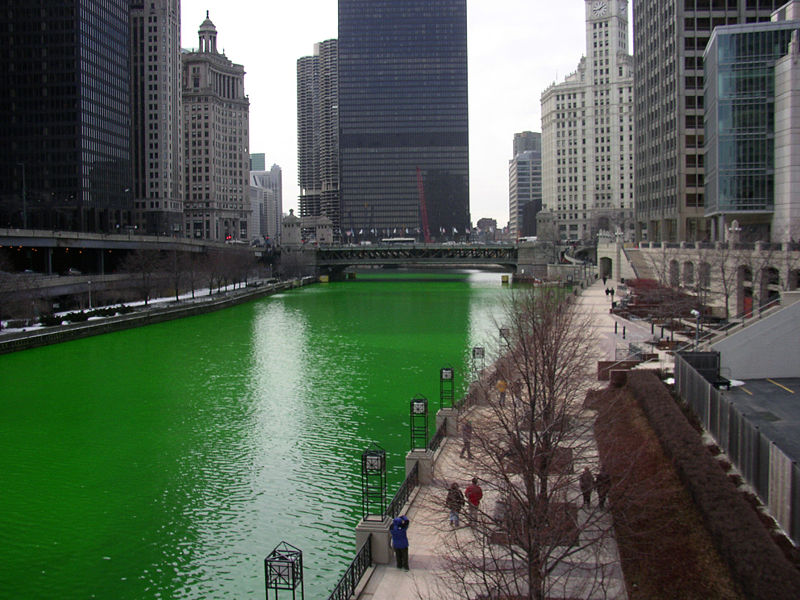Louise Lawless | Contributing Writer
A shameless grab for tourists’ money? A free-for-all holiday for the Ministers of Ireland? A source of national pride? The only holiday in March that can be commercialised? Whatever your opinion on it, the green holiday of old is underway yet again.
What is it even about? Like the other suitably vague “holidays” such as Valentine’s Day , people aren’t quite sure what the story really is with Patrick’s Day.
As a teenager you are expected to go to town, get pushed around the city centre in order to have a glance at parade floats that you really couldn’t care less about, have a crap time with too many people while getting outrageously and illegally drunk.
He drove all the snakes out of Ireland right? Is there a historical truth to this? Probably not. Think about snakes in the twenty first century; where are they naturally found? Does Ireland really have the climate for snakes? Has it ever? I know it’s about St Patrick supposedly driving the last of the pagans out of Ireland. The biblical connotations suggest that the pagans are deceptive and sly and snakelike. I see the connection, honestly I do. But ask any Irish person under the age of 80 about St Patrick they will announce that he drove the snakes out of Ireland, and they will not mean the pagan type of snakes. An overly defensive religious fanatic scolds you for even questioning the national day of our patron saint, despite the obvious lack of accurate knowledge and even a concrete reason for the celebration.
It’s one of those holidays that changes dramatically with age. As a child, you wore green clothes, attended the local parade and were allowed to indulge yourself too much in sweets and fizzy drinks because it was the much needed and well deserved break from a self-imposed sacrifice mimicking of our one and only Jesus Christ, or as others call it, Lent.
As a teenager you are expected to go to town, get pushed around the city centre in order to have a glance at parade floats that you really couldn’t care less about, have a crap time with too many people while getting outrageously and illegally drunk. If you don’t do these things, well then you’re failing as a teenager aren’t you?
I’m not really sure what the protocol is for college students as of yet. It falls on a Tuesday this year which means that everyone is working on both the Monday and Wednesday. Not that it makes any difference. It’ll probably be just like how every holiday, weekend, assignment due date, or end of test period is celebrated or commiserated. Drink. Night Out. Fast Food. Hangover. Regret. Standard. No complaints.
Tourists from all over the word flock to our little island in a fruitless, optimistic search for leprechauns for this one day. Expecting to find pots of gold, a rainbow or two and red haired, freckled Irishmen, are they disappointed by our lacklustre parade, the grey weather and funds stretched too far in an attempt to live up the unattainable standards that the world has inadvertently imposed on us?
Instead of the exclusivity of those events, in which only the relevant countries should feel entitled to celebrate, we embrace our representation of cead míle fáilte.
I don’t think so. Amid all my cynicism and pessimistic attitude, I like St. Patrick’s Day. It is irrefutably ours, perhaps one of the lasting results of our desire to be separated from the British a century ago. It’s our version of the 4th of July for the Americans, or Bastille Day for the French. But instead of the exclusivity of those events, in which only the relevant countries should feel entitled to celebrate, we embrace our representation of cead míle fáilte. We call on the Irish across the globe, and the people who for whatever reason feel Irish, to join in, have a Guinness, wear some green and join the party.
The green light of the iconic landmarks around the world is very significant. It highlights an Irish tradition of emigration, and not necessarily in the doom and gloom context that we hear about on a day to day basis. During her time as President of Ireland, Mary Robinson placed a light in the window of Aras an Uachtaráin as a sign of remembering the Irish emigrants. An old Irish folk custom, this was regarded as very special for Irish people all over the world. This idea seems prevalent in the celebrations that have captured the world’s attention. If you are situated in Brazil, England, America, Australia( to name but a few), they are shining their lights for you in honour of your Irish identity. They are accepting you into your new home but with open arms as an Irish citizen. It mirrors Mary Robinson’s actions. Instead of them being welcome to be remembered by their native country, they are saying that they are welcome to their new country and that they should be proud of where they have come from. A far cry from the days of old where Irish emigrants were discriminated against and shop windows had signs saying “No Irish Need Apply” in these parts of the world.
St. Patricks Day, although commercialised and played up for the tourist’s sake , is an Irish celebration that the whole world is involved in No other small country in Europe, or even the world can claim to have a day dedicated to them but that invites everyone to join. It’s incredible really if you think about it, a country who used to be oppressed and ruled by the British Empire , with a population of less than Madrid , manages to capture the attention and focus of the entire world.







